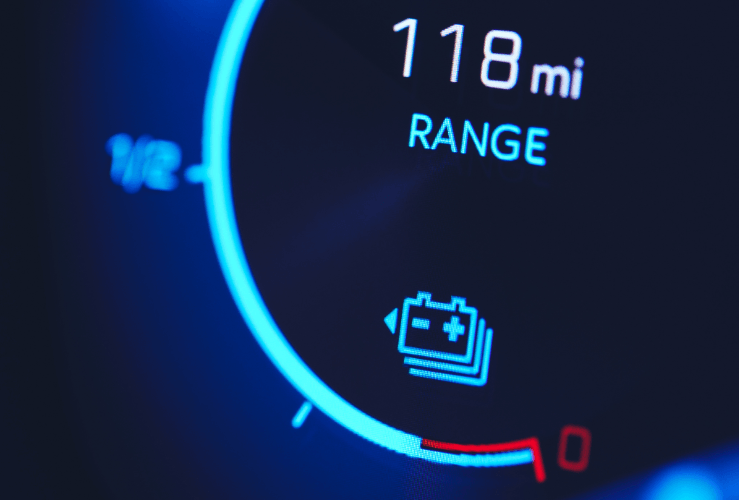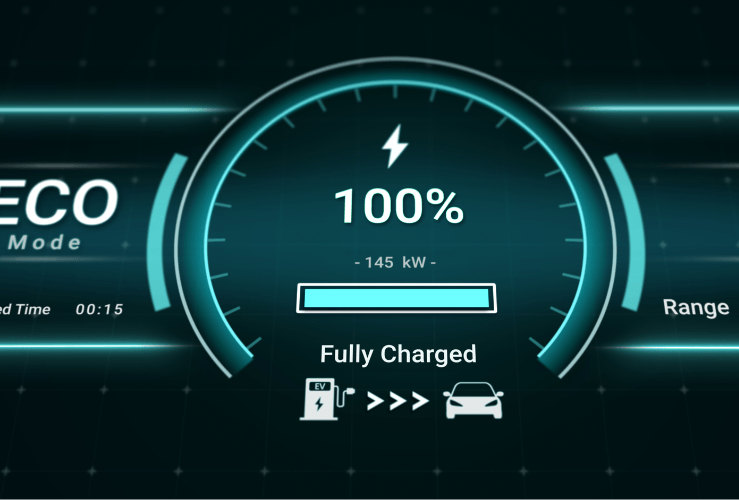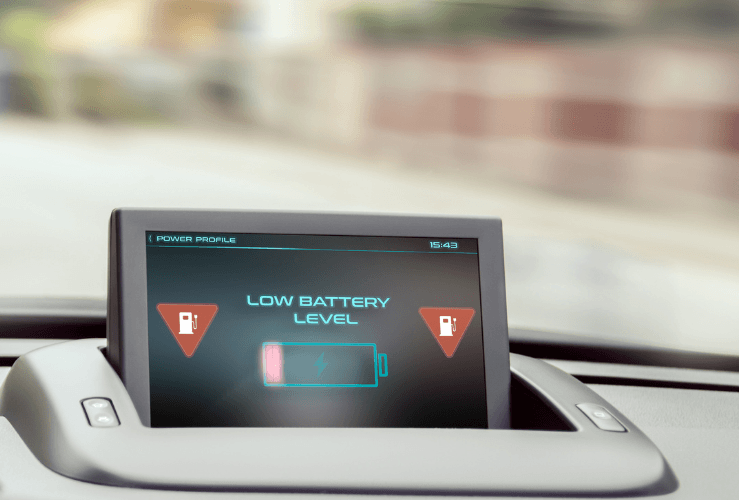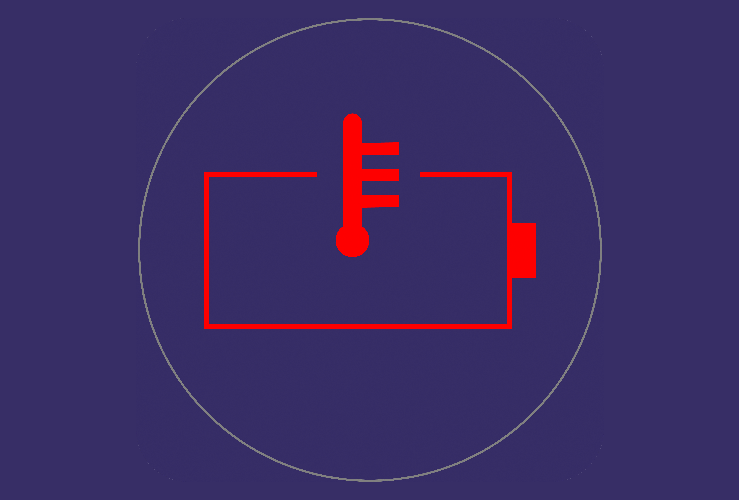If you’ve recently bought your first hybrid or EV - or you’re thinking about buying one - the vehicle's dashboard symbols may be something of a mystery.
Just as with old-school Internal combustion Engine (ICE) cars, it's critical you know what these symbols mean, so you can address any problems as quickly as possible.
Dashboard symbols on hybrids and electric vehicles are different from those on combustion engine cars.
And while dashboard lights on petrols and diesels are standardised across most makes and models, they are less so for hybrids and EVs.

Colour coding on hybrid and EV dashboard symbols
Just as with ICEs, dashboard symbols on your hybrid or EV fall into three colour-coded categories.
Red
If you see a red dashboard symbol your vehicle has a serious problem.
You should pull over somewhere safe and address the issue - if necessary by calling your recovery service provider.
Amber/yellow
Any amber or yellow coloured symbol denotes an issue that needs addressing soon.
It doesn’t mean you need to pull over - just that there is an imminent problem.
Green/blue
A symbol coloured green or blue is simply displaying information about the vehicle.
No action is required on your part.

Electric vehicle symbols explained
EV: Ready to drive
An EV's 'ready to drive' symbol may take the form of a green-coloured car, or simply the words 'Go' or 'Ready'.
As you may have guessed, this means the vehicle is ready to be driven off.
It should appear after you switch on your engine.
If this symbol isn’t showing after you switch on your vehicle, something is amiss.
Other dashboard symbols may illuminate you as to what those issues are.
EV: Eco Mode
Eco Mode is a configuration that optimises how far you can travel on the remaining battery power.
The downside is that performance will be limited.
You'll only see this symbol if you turn on the Eco Mode system (or do so by accident).
EV: General Fault
An electric car's "General Fault" dashboard light is a catch-all symbol covering a range of problems. It could point to an issue with the electrical system, traction, battery or charging system – among others.
This light is frequently accompanied by a beeping sound or a warning message on the car's display panel.

EV: Limited Power
An electric car's "Limited Power" dashboard light is a warning sign that informs the driver of an issue that is impairing the vehicle's performance.
The light is frequently accompanied with a warning message on the car's display panel or a beep sound and may be indicated by a "tortoise" symbol.
The "Limited Power" light generally denotes an issue with the vehicle's power system or energy management system that is lowering the power available to the electric motor.
The precise meaning of the "Limited Power" light can vary based on the make and model of the electric car. The following are a few typical causes of the "Limited Power" light:
- Low battery charge
- High battery temperature
- Problems with the charging system
- Issues with the electric motor or power control unit
- Wiring problems or loose connections
EV: Pedestrian Alert
Electric cars offer the Pedestrian Alert feature since safety is a central priority of both carmakers and regulators.
Due to how silent electric vehicles are when in motion, the Pedestrian Alert system uses an electronic sound to alert pedestrians to the vehicle's presence and reduce collisions.
The alert sound can be turned off in some electric car models, however if the symbol still glows after the sound is off, there is an issue with the alert system.
It's critical to take care of this problem right away by getting help from an experienced specialist.

EV: Low Battery
The "Low Battery" dashboard light is an urgent reminder to recharge the electric vehicle.
This symbol will come on when the battery has about 10% remaining.
It’s design may differ between electric vehicles and may resemble the low fuel petrol-pump warning light on conventional petrol or diesel cars. Alternatively it may look like a classic domestic AA battery.
If the "Low Battery" symbol begins to flash, the battery level is at 5% or lower and the vehicle is in imminent danger of losing power.
The power reserve indicator, which shows the amount of juice left and the projected distance that can be covered before the battery runs out, is supplemented with this sign to act as an additional warning.
EV: Electrical Fault
The "Electrical Fault" symbol on an electric car is a warning indicator that alerts the driver to a problem with the vehicle's electrical system.
This symbol usually appears as an exclamation mark over the image of a car or battery on the dashboard.
The exact meaning of the "Electrical Fault" symbol can vary depending on the make and model of the car, but it generally indicates a problem with the car's power system, battery, motor, or wiring.
Some common causes of the "Electrical Fault" symbol include:
- Low battery charge
- High battery temperature
- Problems with the charging system
- Issues with the electric motor or power control unit
- Wiring problems or loose connections
When the "Electrical Fault" symbol is illuminated, the car may have reduced acceleration, speed, or range, and the driver may need to limit their use of the car's electrical systems.
It is important to address the issue indicated by the "Electrical Fault" symbol promptly, as it can impact the performance and range of the electric car.
If the symbol is flashing or stays on, the driver should stop the vehicle and seek assistance from a qualified technician.
Hybrid car: EV Operation Indicator
When you see the EV operation indicator - often denoted by a car symbol with 'EV' overlaid - you know you are running on electrical power.
Electrical power usually kicks in with lower-speed urban driving. When the petrol or diesel engine kicks in at higher speeds, this symbol will disappear.
As you might expect, EV operation is more economical than the petrol/diesel system.
Hybrid car: Auto-Glide Control
A hybrid car's "Auto-Glide Control" Indicator is a feature that enhances fuel economy and reduces emissions.
Regenerative braking systems, which use the electric motor to create electricity when the vehicle is decelerating, are frequently found in hybrid vehicles.
When the car is in this "auto-glide" mode, the "Auto-Glide Control Indicator", often a light on the dashboard, glows.
When the indicator is on, the car is in a coasting mode, which allows it to move along with less resistance and friction because the engine has been disconnected from the drivetrain. This increases the vehicle's range and lowers fuel consumption (and therefore cost).
Hybrid car: E-Mode (with crossed-out ‘E’)
A dashboard light with a crossed-out 'E' means the vehicle is unable to deliver electrical power.
This normally happens if the car is being driven at higher speeds, whereby the vehicle is unable to recharge the EV battery.
Reducing speed for a while should make E-Mode become available again.
Hybrid car: Pedestrian Warning
This dashboard light usually comprises the classic "stickman" pedestrian standing on a road - warning the driver that a human is at risk of being struck by the vehicle.
With electric engines being so quiet, pedestrians may fail to identify the presence of an EV – making such a safety feature essential.
If the driver fails to act, the brakes should kick in automatically.
Hybrid car: Battery Charge Level
This symbol comprises a battery with an electric flash.
It appears when the battery is low - flashing red when almost empty.
The vehicle will switch to the combustion engine until the battery is recharged.
Hybrid car: Battery Temperature Warning
This dashboard light - a battery overlaid with a thermometer - appears when the traction battery gets too hot (in either an EV or a hybrid).
If you see this, pull over somewhere safe and allow the battery to cool down.





